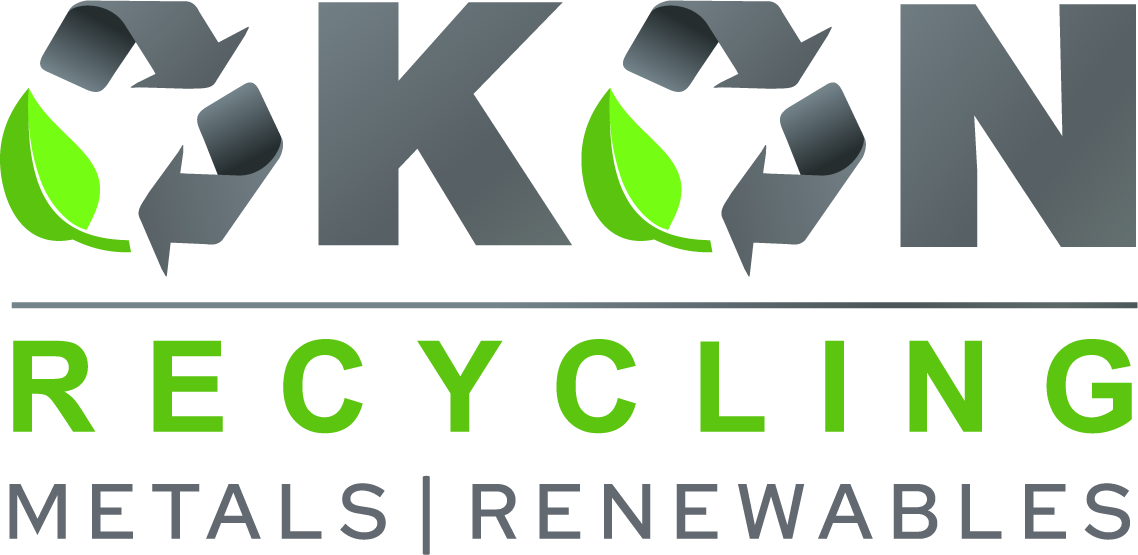5901 Botham Jean Blvd, Dallas, TX 75215
Aluminum Recycling Best Practices
February 5, 2025Aluminum recycling is not just about conserving energy; it significantly reduces greenhouse gas emissions.
Each ton of recycled aluminum prevents the release of 9 tons of CO2 emissions into the atmosphere, equivalent to the annual carbon footprint of an average U.S. household. Globally, increasing aluminum recycling rates by just 10% could prevent 15 million tons of CO2 from entering the atmosphere annually.
Beyond environmental impact, companies like Okon Recycling play a vital role in aluminum waste management. By efficiently collecting, processing, and repurposing aluminum scrap, Okon Recycling helps keep millions of tons of aluminum out of landfills each year.
This not only conserves landfill space but also prevents potential soil and groundwater contamination, reinforcing a cleaner and more sustainable future.
Aluminum recycling also drives economic growth, creating jobs across various sectors. From collection and sorting to processing and manufacturing, the industry supports over 100,000 jobs in the U.S., contributing billions to the economy. Additionally, by reducing the need for raw materials, recycling helps stabilize aluminum prices, benefiting manufacturers and consumers alike.
As we explore aluminum recycling best practices, we’ll see how this infinitely recyclable metal is shaping a more sustainable and economically vibrant future.
Collection and Sorting Techniques in Aluminum Recycling
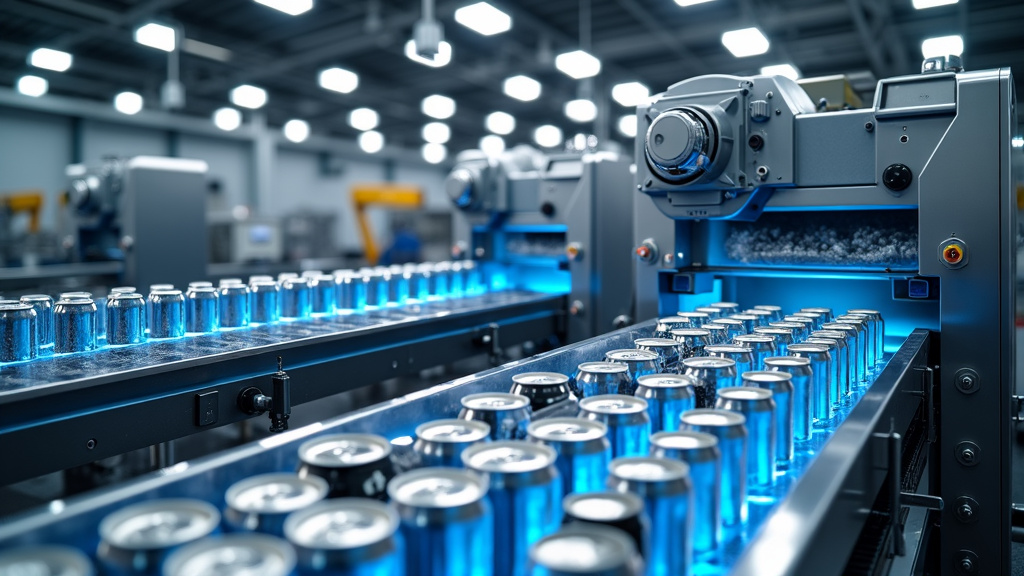
In sustainable waste management, aluminum recycling exemplifies efficiency and environmental stewardship. The process begins long before that can in your hand becomes part of a new product.
Let’s explore the fascinating world of collection and sorting techniques that make aluminum recycling a cornerstone of the circular economy.
The Art of Effective Collection
Have you ever wondered why some recycling bins have specially shaped openings? It’s not just clever design – these features guide consumers to dispose of items correctly, reducing the chance of non-recyclable materials sneaking into the mix. This simple yet effective approach significantly improves the quality of collected materials.
But collection goes beyond residential efforts. Many cities are implementing smart bin technologies that use sensors to alert waste management teams when bins are full, optimizing collection routes and reducing unnecessary pickups. It’s a small change with big implications for efficiency and urban planning.
Sorting: Where Technology Meets Sustainability
Once collected, aluminum enters a high-tech world of sorting that would excite any sci-fi enthusiast. Gone are the days of manual sorting – today’s recycling facilities are equipped with cutting-edge automated technologies.
At the forefront of this technological revolution are optical sensors. These marvels can identify different types of metals and materials at lightning speed, ensuring that aluminum is accurately separated from other recyclables. But the innovation doesn’t stop there.
Artificial Intelligence (AI) is transforming the sorting process, learning to recognize and adapt to new packaging materials and contaminants in real-time. Sensor-based sorting technology is creating furnace-ready materials, enabling smelters to increase the use of post-consumer recycled content in their products.
Quality Control: The Unsung Hero of Recycling
In the recycling world, quality is king. The purer the sorted aluminum, the more valuable and versatile it becomes. This is where advanced quality control measures come into play, ensuring that the end product meets stringent industry standards.
Eddy current separators, for instance, use powerful magnets to separate non-ferrous metals like aluminum from other materials. This technology has become a staple in modern recycling facilities, dramatically improving the purity of recycled aluminum streams.
X-ray fluorescence (XRF) analyzers provide real-time analysis of metal composition, ensuring that recycled aluminum meets specific alloy requirements and opening up new possibilities for its use in high-grade applications.
The Future is Bright (and Shiny)
Looking to the future, the potential for innovation in aluminum recycling is boundless. Researchers are exploring new frontiers, such as using machine learning to predict and adapt to changes in waste streams, potentially revolutionizing recycling on a global scale.
The journey of that aluminum can from your recycling bin to its new life as part of a car, airplane, or even another beverage container is a testament to human ingenuity and our commitment to sustainability. By embracing these advanced collection and sorting techniques, we’re not just recycling aluminum – we’re reshaping our relationship with resources and paving the way for a more circular, sustainable future.
| Technology | Description |
|---|---|
| AI-Powered Optical Sorting Systems | Utilize high-resolution cameras and advanced sensors to recognize and categorize materials based on visual characteristics, enhancing material purity and recycling efficiency. |
| Near-Infrared (NIR) Technology | Detects and analyzes spectral signatures of materials for precise identification and sorting, particularly effective in separating plastics by polymer type. |
| Robotics and Automated Sorting | Incorporates AI algorithms and precision gripping technology to manipulate and sort materials on conveyor belts, increasing sorting speed and accuracy. |
| X-ray Transmission (XRT) Sorting | Uses differences in atomic density to distinguish between materials, allowing precise separation of aluminum from contaminants. |
The Role of Technology in Aluminum Recycling Efficiency
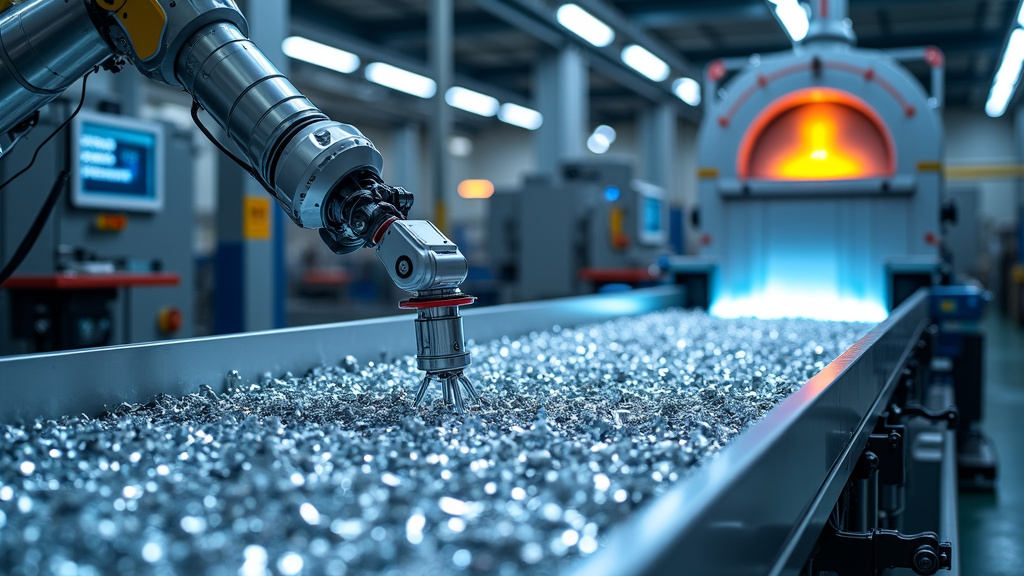
The aluminum recycling industry has undergone a technological revolution in recent years, significantly enhancing efficiency and sustainability.
Two key processes at the forefront of this transformation are pyrometallurgy and hydrometallurgy. These advanced methods boost recycling rates and also reduce the environmental impact of aluminum production.
Pyrometallurgical processes involve high-temperature treatment of aluminum scrap. This technique has seen remarkable improvements, with modern furnaces now capable of processing mixed alloys more effectively. For instance, advanced pyrometallurgical systems can now recover up to 95% of aluminum from complex scrap, a substantial increase from earlier recovery rates.
Conversely, hydrometallurgical processes use chemical treatments to extract and purify aluminum. This method has gained traction due to its lower energy requirements and reduced emissions. A groundbreaking application of hydrometallurgy is the use of ionic liquids for aluminum extraction, which can operate at much lower temperatures than traditional methods, cutting energy consumption by up to 70%.
Beyond these core processes, sorting technologies have revolutionized the pre-treatment phase of recycling. Cutting-edge optical sorters employing artificial intelligence can now distinguish between different aluminum alloys with unprecedented accuracy. This precision sorting ensures higher purity of recycled aluminum, meeting the stringent quality standards of industries like aerospace and automotive.
| Technology | Description | Impact on Recycling Efficiency |
|---|---|---|
| X-ray Transmission (XRT) | Non-destructive technique for sorting aluminum alloys | High accuracy in alloy separation |
| Laser-Induced Breakdown Spectroscopy (LIBS) | Spectroscopic technique for identifying materials | Enhanced sorting precision |
| Automated Processing Lines | Fully automated systems for scrap processing | Increased throughput and efficiency |
| Inert Anode Technology | Advanced smelting process that reduces emissions | Significant reduction in carbon footprint |
Automated Systems: The Future of Aluminum Recycling
The integration of automated systems throughout the recycling process has been transformative. Robotic arms equipped with sensors can now sort and process aluminum scrap at speeds far exceeding human capabilities. These systems improve efficiency and enhance worker safety by handling potentially hazardous materials.
One of the most exciting developments is the use of machine learning algorithms to optimize recycling processes in real-time. These smart systems can adjust furnace temperatures, chemical compositions, and sorting parameters on the fly, maximizing yield and minimizing energy use. The result? A recycling process that’s not just faster, but also more adaptable to varying scrap compositions.
Sustainable Solutions and Emission Control
As the aluminum industry strives for greater sustainability, innovative emission control technologies have become crucial. Advanced scrubber systems can now capture and neutralize up to 99% of harmful emissions from recycling plants. Moreover, some facilities are experimenting with carbon capture technologies, potentially turning recycling plants into carbon-neutral or even carbon-negative operations.
The drive towards sustainability has also spurred the development of closed-loop recycling systems. These setups aim to recycle not just the aluminum, but also the chemicals and water used in the process. For example, laser-induced breakdown spectroscopy (LIBS) technology is revolutionizing the sorting process, enabling rapid and precise identification of aluminum alloys without the need for chemical treatments.
As we look to the future, the role of technology in aluminum recycling will only grow more significant. From AI-driven sorting to zero-emission recycling plants, these innovations are not just improving efficiency—they’re reshaping the entire landscape of aluminum recycling, paving the way for a more sustainable and circular economy.
Aluminum Recycling Success Stories: Inspiring Community and Corporate Initiatives
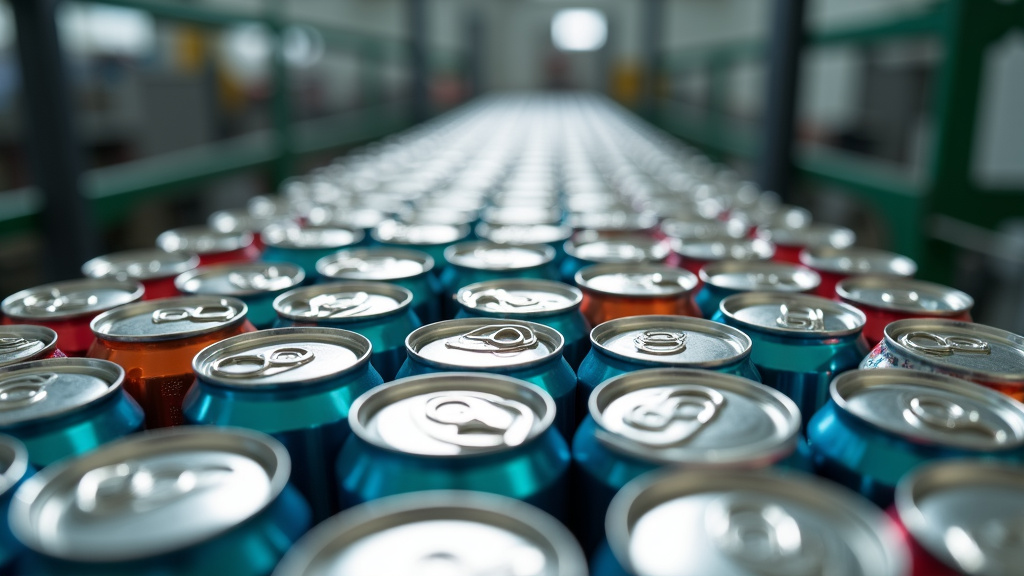
The journey towards a sustainable future is paved with innovative recycling programs that transform discarded aluminum into valuable resources. Two shining examples—San Francisco’s community-driven efforts and Coca-Cola’s ambitious corporate initiative—demonstrate how concerted action can yield remarkable results in aluminum recycling.
San Francisco: A Beacon of Recycling Excellence
San Francisco has emerged as a trailblazer in waste management, achieving an impressive aluminum recycling rate that exceeds 80%. This remarkable feat didn’t happen overnight. It’s the result of years of dedicated effort, community engagement, and forward-thinking policies.
The city’s success stems from its comprehensive “Fantastic Three” program, which provides residents with separate bins for recyclables, compostables, and landfill waste. This system, coupled with extensive public education campaigns, has made recycling a way of life for San Franciscans.
Moreover, the city’s commitment to zero waste has driven innovative approaches to recycling. From implementing strict recycling mandates for businesses to offering incentives for waste reduction, San Francisco has created a culture where aluminum recycling is not just encouraged—it’s expected.
The impact of these efforts extends beyond environmental benefits. The city’s recycling initiatives have created jobs, stimulated the local economy, and set a powerful example for other municipalities worldwide.
Coca-Cola’s ‘World Without Waste’: Corporate Responsibility in Action
On the corporate front, Coca-Cola’s ‘World Without Waste’ initiative stands out as a prime example of how global companies can drive significant change in recycling practices. Launched in 2018, this ambitious program aims to make Coca-Cola’s packaging 100% recyclable by 2025 and use 50% recycled materials in bottles and cans by 2030.
The initiative goes beyond mere promises. Coca-Cola has invested in cutting-edge recycling technologies, forged partnerships with local recycling organizations, and launched consumer awareness campaigns to encourage recycling. These efforts have already yielded tangible results, with the company making significant strides in increasing its use of recycled aluminum in beverage packaging.
However, it’s worth noting that Coca-Cola’s journey hasn’t been without challenges. Recent reports suggest the company has adjusted some of its initial targets, highlighting the complexities of implementing large-scale recycling initiatives. Despite these setbacks, Coca-Cola’s efforts continue to push the envelope in corporate sustainability practices.
The Power of Collective Action
What these success stories underscore is the transformative power of collective action. Whether it’s a city mobilizing its residents or a global corporation reshaping its operations, the key to successful aluminum recycling lies in sustained commitment and innovative approaches.
These initiatives not only divert aluminum from landfills but also conserve energy, reduce greenhouse gas emissions, and preserve natural resources. The ripple effects of such programs extend far beyond their immediate environmental impact, fostering a culture of sustainability that can inspire similar efforts worldwide.
As we look to the future, these success stories serve as beacons of hope and blueprints for action. They remind us that with determination, innovation, and collaboration, we can transform the way we manage our resources and build a more sustainable world—one recycled aluminum can at a time.
Challenges and Solutions in Aluminum Recycling
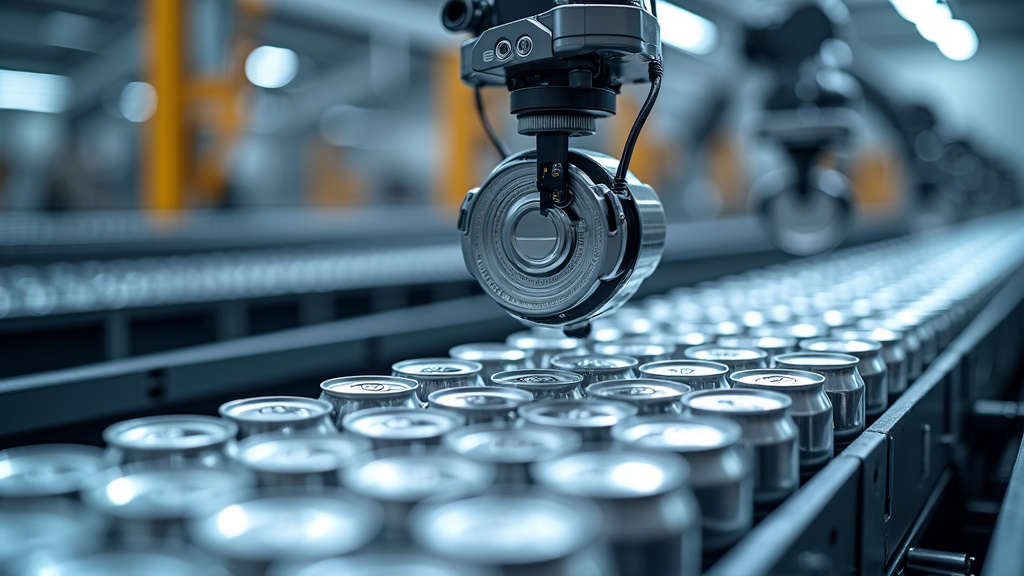
The recycling of aluminum is a cornerstone of sustainable resource management, offering significant environmental and economic benefits. However, the industry faces persistent challenges that demand innovative solutions.
Let’s explore the complexities of aluminum recycling and how cutting-edge technologies and standardized practices are reshaping the landscape.
The Contamination Conundrum
At the heart of aluminum recycling challenges lies the issue of contamination. When non-aluminum materials infiltrate the recycling stream, they can significantly degrade the quality of the final product. This isn’t just a minor inconvenience – it’s a major headache for recyclers and manufacturers alike.
Common contaminants include plastics, other metals, and even food residues. These unwanted materials can lead to impurities in the recycled aluminum, potentially compromising its structural integrity and performance in new applications. The result? Lower-quality products and increased processing costs.
Even small amounts of contamination can have outsized effects. For instance, a single misplaced item in a batch of aluminum cans could potentially render the entire load unusable for high-grade applications. It’s a delicate balance that recyclers must constantly navigate.
Advanced Sorting: A Game-Changing Solution
Enter the heroes of modern recycling: advanced sorting technologies. These cutting-edge systems are revolutionizing how we separate and purify aluminum scrap. By leveraging a combination of sensors, artificial intelligence, and robotics, recyclers can now achieve unprecedented levels of accuracy in material separation.
One standout technology is X-ray transmission (XRT) sorting. This method uses differences in atomic density to distinguish between various materials, allowing for precise separation of aluminum from contaminants. It enables recyclers to see beyond the surface and sort materials with incredible precision.
But the innovation doesn’t stop there. Eddy current separators, magnetic sorting systems, and even laser-induced breakdown spectroscopy (LIBS) are all part of the recycler’s high-tech toolkit. These technologies work together to ensure that only the purest aluminum makes it through to the next stage of processing.
Standardization: The Key to Consistency
While advanced sorting technologies are crucial, they’re only part of the solution. To truly revolutionize aluminum recycling, we need to standardize collection systems across the board. This means creating uniform guidelines for how aluminum is collected, sorted, and processed from the moment it leaves a consumer’s hand to its arrival at the recycling facility.
Standardization offers numerous benefits. For starters, it simplifies the recycling process for consumers, reducing confusion about what can and can’t be recycled. This, in turn, leads to higher participation rates and less contamination at the source. It’s a win-win situation that benefits everyone involved in the recycling chain.
Moreover, standardized systems allow recyclers to optimize their operations. When they know exactly what to expect from incoming materials, they can fine-tune their sorting and processing techniques for maximum efficiency. This improves the quality of recycled aluminum while reducing costs and energy consumption throughout the recycling process.
Public Awareness: The Missing Piece of the Puzzle
Even the most advanced recycling technologies and standardized systems won’t reach their full potential without public buy-in. That’s why increasing public awareness about proper aluminum recycling practices is critical.
Education campaigns can work wonders in this regard. By teaching consumers about the importance of properly cleaning and sorting their aluminum waste, we can significantly reduce contamination at the source. It’s about empowering individuals to become active participants in the recycling process, rather than passive contributors.
Community outreach programs, school initiatives, and targeted social media campaigns can all play a role in spreading the word. The goal is to create a culture of recycling awareness, where proper disposal of aluminum becomes second nature for everyone.
The Road Ahead: A Brighter, More Sustainable Future
By tackling the challenges of contamination head-on and implementing innovative solutions, we can ensure a steady supply of high-quality recycled aluminum for years to come. This not only conserves valuable resources but also significantly reduces the energy consumption and carbon footprint associated with aluminum production.
The journey towards perfect aluminum recycling may be ongoing, but with each technological advancement and each person who commits to proper recycling practices, we move one step closer to a truly circular economy for this versatile and valuable material. As consumers, industry professionals, and global citizens, we all have a role to play in this vital transformation.
Conclusion: Advancing Towards Sustainable Aluminum Recycling Practices

The environmental benefits of aluminum recycling are undeniable. Each recycled can saves enough energy to power a television for three hours while reducing greenhouse gas emissions by up to 95% compared to primary production.
Yet, there is still room for improvement. Advanced sorting technologies, like X-ray transmission and laser-induced breakdown spectroscopy, are enhancing recycling efficiency, enabling the recovery of high-quality aluminum from increasingly complex waste streams.
Education plays a pivotal role in this green movement. By raising awareness of the importance of proper recycling practices and the far-reaching impact of individual actions, we can significantly increase recycling rates. From schools to workplaces, fostering a culture of responsible consumption and disposal is key to closing the loop in the aluminum lifecycle. Innovation continues to propel the industry forward.
Closed-loop recycling systems, once a distant dream, are becoming a reality in sectors like automotive manufacturing. These systems conserve resources and pave the way for a truly circular economy. As we look to the future, emerging technologies in smelting and alloy recovery promise to further reduce the environmental footprint of recycling processes.
While companies like Okon Recycling lead these advancements, the true power lies in collective action. From consumers making informed choices to industries implementing comprehensive recycling programs, every effort counts. It is through this united front that we can truly unlock the full potential of aluminum recycling.
If you are looking to be part of this green revolution, consider partnering with Okon Recycling.
With over a century of experience and a commitment to innovative, sustainable practices, we are here to help you make a difference. Contact us at 214-736-9509 to learn how we can work together to create a cleaner, more sustainable future through responsible aluminum recycling.
